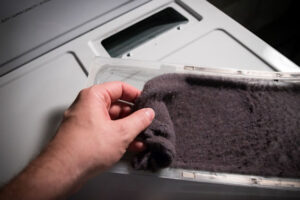 One of the simplest yet most neglected maintenance tasks in the home has to do with your clothes dryer. Failing to do this simple task can sometimes have deadly results.
One of the simplest yet most neglected maintenance tasks in the home has to do with your clothes dryer. Failing to do this simple task can sometimes have deadly results.
Dangerous dryer fires are extremely common. In fact, in my job as a Certified Dryer Exhaust Technician, I speak to two or three people a month who have called me because their dryer caught on fire. In most cases, these fires were totally preventable.
Dryers are the second most dangerous appliance in the house. The first is the stove. But let’s face it, in many homes, the dryer gets far more use than the stove.
Cleaning and washing the lint screen in your clothes dryer can help avoid dangerous dryer fires!
What is a lint screen?
Every dryer has a lint screen. Some are located at the top of the dryer. Some are located just inside the door of the dryer. Here are examples of each.
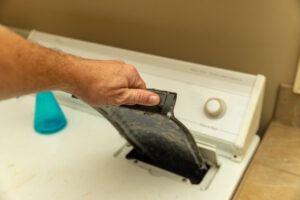
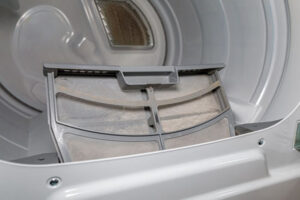
If you still don’t know where your lint screen is, check your dryer’s instruction manual.
Don’t ever use your clothes dryer with a damaged or missing lint screen.
Cleaning your lint screen
Before each load of laundry, pull out the lint screen and remove any lint. Simply use your fingers to remove the lint from the screen and throw away the lint.
Some of the more sophisticated clothes dryers have an alert if the dryer senses that the screen is full. Don’t depend on the alert. It’s best to get in the habit of removing the lint before every load of laundry.
Not cleaning your screen before each load creates extra wear and tear on your dryer, resulting in expensive appliance repairs. In addition, your clothes won’t dry as quickly, creating more expensive utility bills.
Washing your lint screen
In addition to cleaning your screen before each load of laundry, washing your screen is extremely important. Residue from laundry detergent, fabric softener, and dryer pads collects on the screening material. This residue can plug up the screen which makes your dryer harder to “breathe.” Screens should be washed every few months, depending on your family’s laundry habits.
Washing a lint screen is very simple:
1) Remove the screen and clean off any lint as you normally do before each load. Never use water to wash off the lint.
2) Run hot water over each side of the screen.
3) Wet a soft bristle brush or old toothbrush and scrub both sides of the screen.
4) Rinse both sides of the screen with hot water to remove the soap.
5) Repeat as needed until the screen is clean and there’s no more soap residue.
6) Inspect the screen to make sure no soap residue remains as well as the condition of the screen.
7) Dry the screen with a clean towel or allow to air dry.
8) Re-install the clean screen before using the dryer.
CAUTION: Don’t apply too much pressure to the screen. Damaging or tearing the somewhat fragile screening material will result in having to buy a new lint screen.
Of course, cleaning your screen is only one way to avoid dryer fires. Having an appliance technician clean out the lint from inside the dryer under the drum should be done once or twice a year. In addition, having a Certified Dryer Technician clean out your dryer vent system once a year is also extremely important. Here are some important tips on how to avoid a dangerous dryer fire.
Dryer fires are easily avoidable with just these simple tasks.

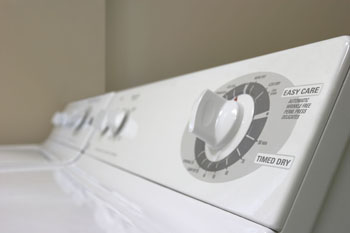

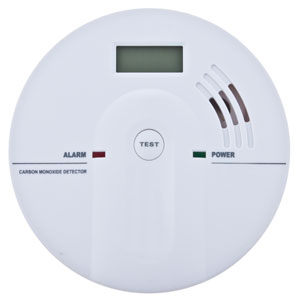
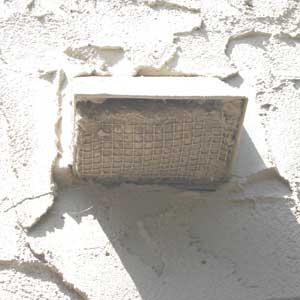 Although the screens are useful for keeping out rodents, the screens are actually against code because they tend to plug up with lint.
Although the screens are useful for keeping out rodents, the screens are actually against code because they tend to plug up with lint.